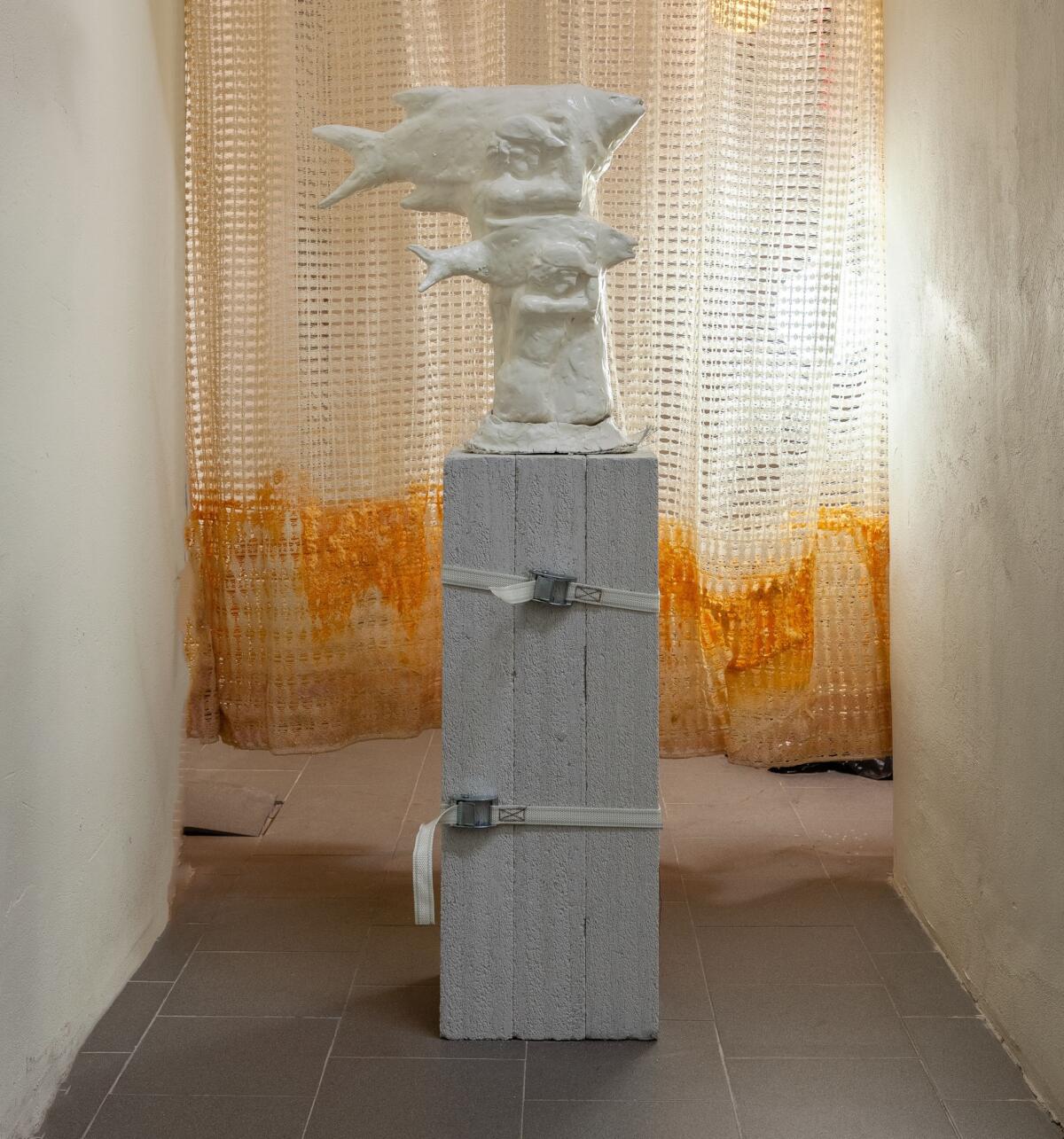
Agata Cieślak is a multi-media and multi-species artist who works with painting and sculptural objects, engaging text and her own voice, and also, ants. In her recent solo exhibition in Warsaw’s Dzielna Foundation, she has created an installation that is intended to be a sketch for a musical about secular morality. The artist’s work references forms of resettlement architecture, and serves as a fertile field of associations of different sorts, as well as a pretext to discuss the ways in which the art field and its actors have been operating, and their potential alternatives. The work tells a story about hopes and myths regarding religion, philosophy, and art, and asks: is it worth reconstructing ruins according to their original spatial designs, only to fill their spatial void with remains? In such a context, what is the importance of the postulated usefulness of art, and how does the tending to the absolute/ideal make sense in the present? Must we completely destroy nature in order to truly know it?
We were tending to the remains is a spectacle in which the artist leads us through a landscape woven with remnants of decaying ideas, constituting a life-giving compost, on which we come to “cultivate” and “cherish” our reality.
Romuald Demidenko: It’s hard to situate your work in one medium; you seem to have different ways of approaching art and dismantling mechanisms. What informs your practice as an artist?
Agata Cieślak: I use various media and methods of expression. I do things that may not quite be easily categorized in the way they have traditionally been categorized over the last few centuries. But it seems to me that what I do is nothing special in the context of what is happening in art today, because it is becoming more and more interdisciplinary, complex, and goes beyond the different registers associated with several recent turns, be it performative or academic.
I don’t see my practice as a “final” product of my life, for me it is a way to process and understand the complex reality that we exist within. Making objects is just a way for me to slow down and think things through. They help me to formulate some thoughts but they also then become a starting point for further questions and discussions. Also, art itself informs my practice. I think it is a fascinating socio-political category, sort of late-capitalist reality shrunk to a scale that is easy to understand by one person: in art you can observe every socio-political trend (eg. tokenism of artists from “troubled” regions, ecological activism) but also the perils of our civilisation (class, race, gender division, overconsumption, etc.). Art is also immediate — which is both positive and negative at the same time. On the one hand it can become a platform for speech, on the other, as in ways that it is produced now, it becomes a mimicry of capitalism and disables thinking processes that are more complicated than a quick response. This negativity is precisely something that makes art dialectical and thus — an important and fascinating entity.


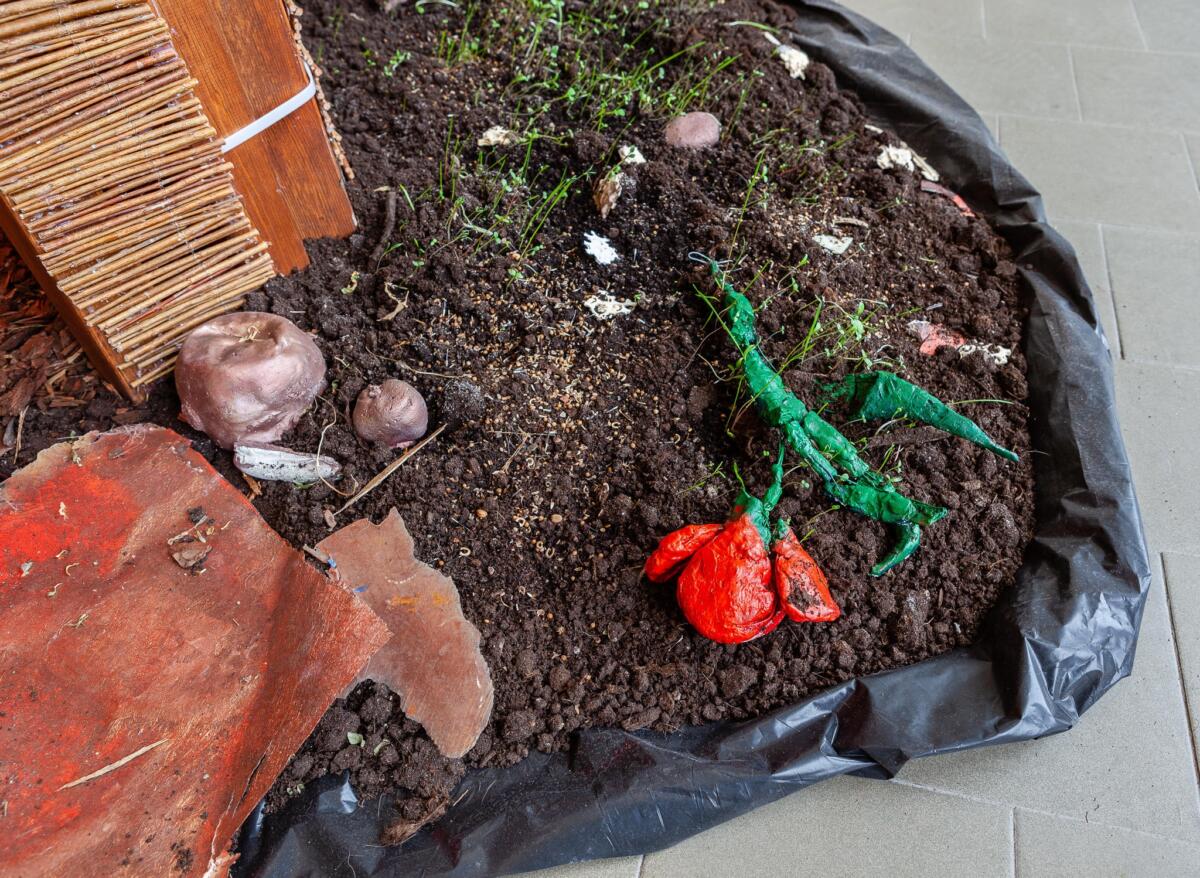
RD: You have a musical background apart from your artistic education. Could you reveal a little bit about this?
I went to a music-focused program for primary and secondary school. I never liked practicing an instrument. It was an alienating and demanding occupation, involving many hours of confinement. I always had theoretical classes at school, during which we learned, for example, harmony and ear training. You couldn’t really admit you liked it without outing yourself as a nerd. Theoretical classes were by definition not fun, everyone went to music school to play rather than to learn theory. In retrospect, I think I stayed there for so many years because of music theory. I was going back and forth between two schools — the regular school and the music school, which I would go to in the afternoon, which is where all the cool people were with the older friends. This experience probably left permanent marks on my psyche and made me no longer want to pursue my music education and study something more ordinary. That’s why I think I went to study fashion design in Lodz. I also worked in clothing design as an assistant for a year. After these few years, I realized that fashion is not exactly what I want to do in the long term and can be toxic, due to the huge amount of competition. Fashion production can be extremely expensive, probably even more so than art, and therefore it is difficult to be successful. Of course, everything is also based on unpaid or low-paid internships. Then I figured I’d go into art, which marked a big change. It turns out that in this field there are some similar patterns, but it still also creates more possibilities.
RD: You settled in Warsaw and at the same time began your studies at the Dutch Art Institute in Arnhem, the Netherlands.
I used to live in Warsaw, but in fact I was hardly present during those two years. At that time I worked in an organization where I programmed exhibitions and events, and in the evenings I prepared for school or I had to go to the Netherlands. Around 2018, I decided to go to Beirut, Lebanon, where I lived for another two years. I returned to Warsaw in the second wave of the pandemic, in autumn 2020. Shortly after returning, I was conditionally admitted to the philosophy program at the Graduate School for Social Research at the Polish Academy of Sciences. They weren’t sure if anyone would be there to help me, but they were interested in my research ideas. Later, I started looking for artistic PhD programs and in 2022 I commenced my PhD studies at the Universität Mozarteum in Salzburg.
Aleksandra Szkoda: The exhibition We were tending to the remains seems to be very literary, as it’s based on words and at the same time it’s dense with media and thick with meanings. Is working with text the medium you identify with for the most part?
Literary traditions have always been present in my family home, but I have never been educated in this direction. This exhibition started with a text. I wrote out the show in my notebook, this is how I “sketch”. I wrote down different sentences that made up the world I wanted to create, with some notes about how it should be presented, and then I went from there. It’s also some kind of memory, because I have a bad visual memory but a good auditory one. I’m good at using words. It works quite intuitively.
AS: In one of the exhibition spaces there is a painterly object in the form of an altar. Does this part give a hint to the installation, and the eventual form of the musical in its next stages?
It’s a bit of a perverse object that is supposed to be a storyboard for the musical, which will be shown as a film. Many people have always told me that I should paint more and show the effects of my painting activity. I decided to paint the altar so that it has a symbolic character. It shows sketches for the film, sometimes specific scenes — most of the elements of the exhibition are also iconographically depicted on it. As it is also a storyboard for the film, this is where the beginnings of various scenes are visually created, which I would later like to transfer to the language of film. I must admit that when painting it, I also have in my head the shot in which it will be used. It’s made for a musical and I’ve decided it won’t exist in the future. That’s why I put it on a pedestal made of dried mycelium, and as soon as I finish painting it, when I think it’s ready, I’m going to give it to the consumption of mushrooms, which will have enough moisture to live and consume the wood that the piece is constructed from.



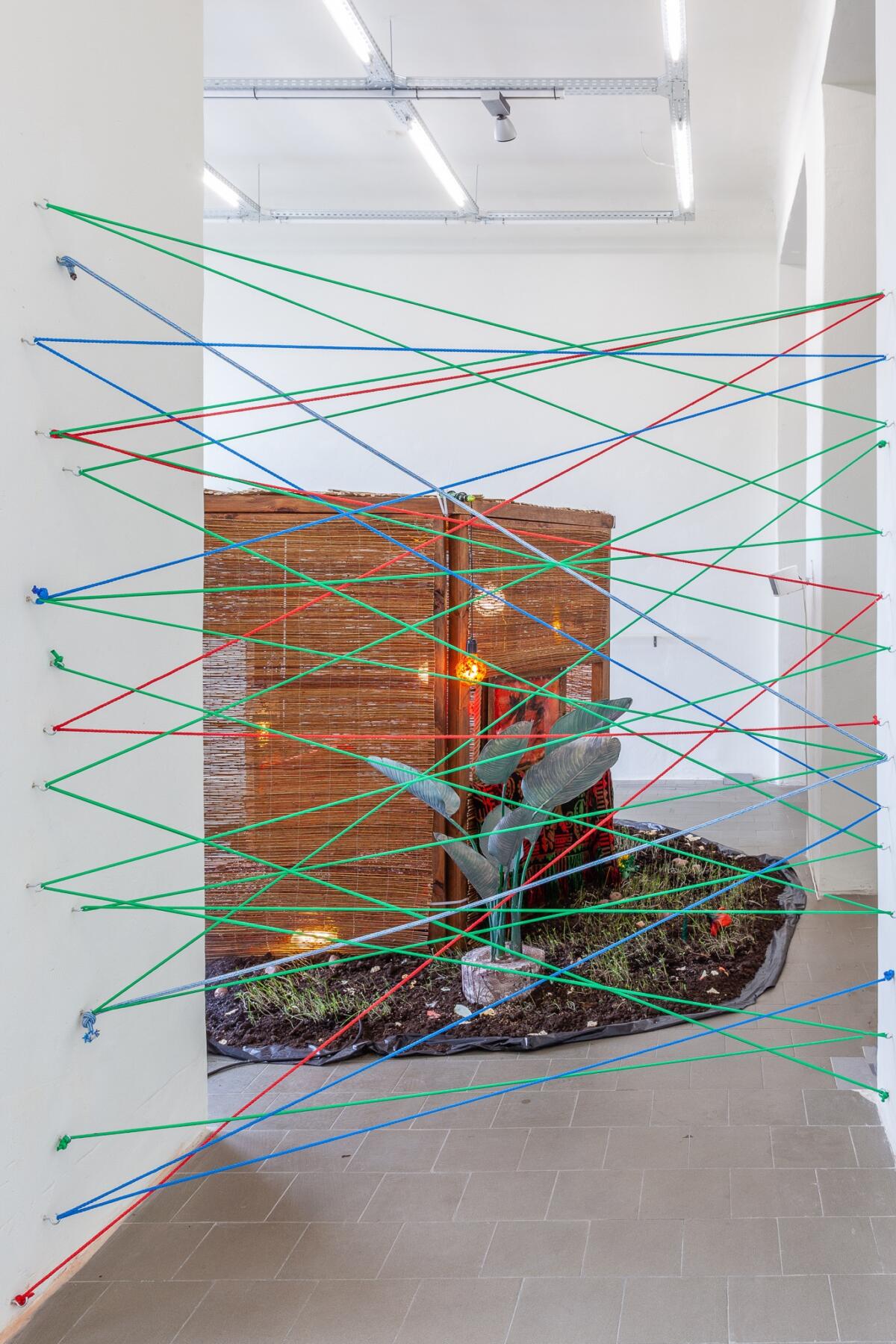
RD: You use various non-“innocent” (toxic, non-biodegradable, etc.) materials applied in everyday life and in a way overused by the art world, the production of which requires a long process and is energy-absorbent. Do you express in this way the necessity to change?
In terms of materials, I think what I’m proposing is some kind of manifesto. Perhaps it is not even the matter of the resources themselves that is crucial here, but the life I give them and what I do with the things I use. I work on my exhibitions on my own as I do not subcontract anyone, and eventually not everything has to be perfectly finished. In the art world it is a bit that everything has to be sleek on a photograph. It would be good if the market was different and gave artists a chance to finish their projects, give them time and the ability to create at the right pace. It is difficult to expect a small commercial gallery to extend the process of working on a project indefinitely, but public institutions should challenge themselves more to do so. Until that changes, I’m looking for ways to create using the gaps in the existing procedures. The exhibition includes part of the installation that I am realizing for the long term. It is conceived in such a way that it will eventually become a set design for the film I am working on. The entire installation is modular. I was also thinking about a symbolic form that would also “carry” this modularity and create content. Hence the idea of the hut, which in a sense is a module and at the same time a very symbolic object that can take a variety of artistic forms. It is a shelter, it can be a tent, something temporary, it can have a wooden structure, it can be a form dug in the ground. This opens up a lot of space for fantasy and possibilities for conceptualization. In addition, it is an object embedded in today’s geopolitical problems. The form of the hut is immediately associated with refugees, climate change, various types of crises, and war. But there is also an association with pleasure, memories of camping holidays. I am an artist not represented by any gallery. I have to store these things myself, so I was thinking of something that can be dismantled, rolled up, and not take up much space later. After disassembly, the installation can be recreated in the same form, regardless of location. In fact, the formicarium is the only object with which I never know what to do between exhibitions. The rest fits in boxes and does not take up so much space in my studio. I am looking for opportunities to use such solutions, and at the same time I am trying to look for universal meaning codes.
RD: You’re mentioning an artificial anthill that you built in your studio and moved to the exhibition. Ants appear in one of the huts and are the protagonists of the text that can be heard in the sound installation. You can learn from it how they work. Where did the idea to use this living element come from?
Ants learn from each other, they pass on pheromones. It was ants and ant colonies that inspired many ideas for developing robotics, which I found very interesting. Now we use devices like chatbots that have the ability to reason because they are programmed by us. The ant, meaning the body of the singular individual, is an inspiration for robotics — especially military research, which refers to the body of the ant as an example of the “perfect” body structure — they can carry things without their joints becoming too overloaded (as in the case of the human body), they are fast, can walk any direction, they don’t fall, they can use their mouth as a tool, etc. They also act as a superorganism, and pass knowledge through the whole colony, from individual to individual throughout the entire collective body (so e.g. if one singular ant gets to know about some danger). This is how AI software is programmed — it learns something in a specific situation (e.g. via interaction with a human) and then it “passes” on the new knowledge via algorithms, so that it gets better as a phenomenon and not as a singular program that one can use discreetly on their PC.
But to consider this from an ethical standpoint, I would become some sort of artist-messianist which itself is unethical, because art is an elitist category. It would open up all the questions about class, race, power structures, etc. I’m not trying to moralize anyone, nor to do only “ethical” gestures – as I think this is an impossible task in itself. By doing things and performing a variety of gestures, such as keeping pet animals, I’m trying to understand what is ethical in the context of art and life. I also want visitors to think about this element for themselves. I keep ants as an artwork, which is not ethical for sure. I care about them, they have very good living conditions and the colony is growing. Keeping ants is also a form of learning and sharing this knowledge with viewers — which is also a rather positive aspect. There is actually a huge online circle of homegrown myrmecologists which I also see as a fascinating phenomenon; people who exchange tips on caring for ants. There are plenty of videos on YouTube about how to build a formicarium, for example. That’s where my knowledge comes from. I thought that I would like to work with a living organism. So basically there is no singular response for this question – being human and trying to live an “ethical” life always means to be involved in a variety of structures and dependencies that are already amoral. As for the ethics and morality of art in this context, it is also the content of my doctoral thesis, which I am working on in Salzburg. What is modern morality? How could art as an institution contribute to its better understanding? Where is the agency of art in this context?

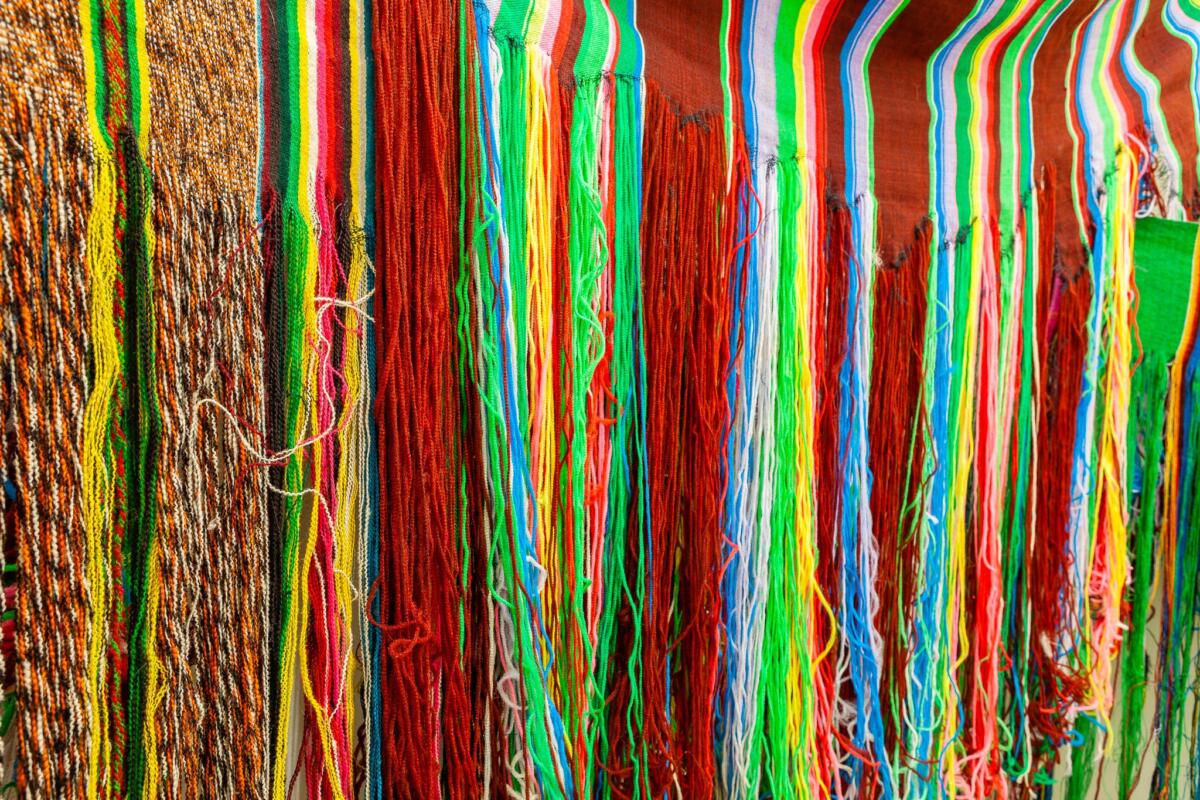
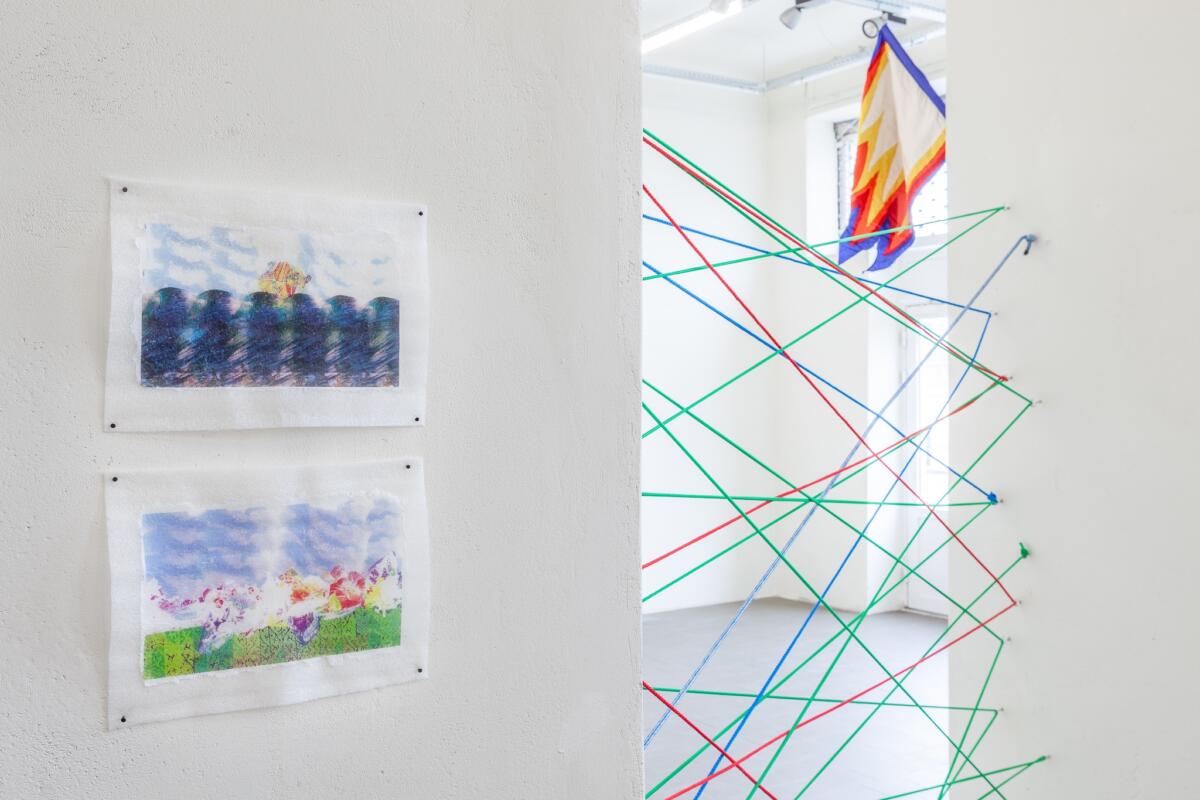
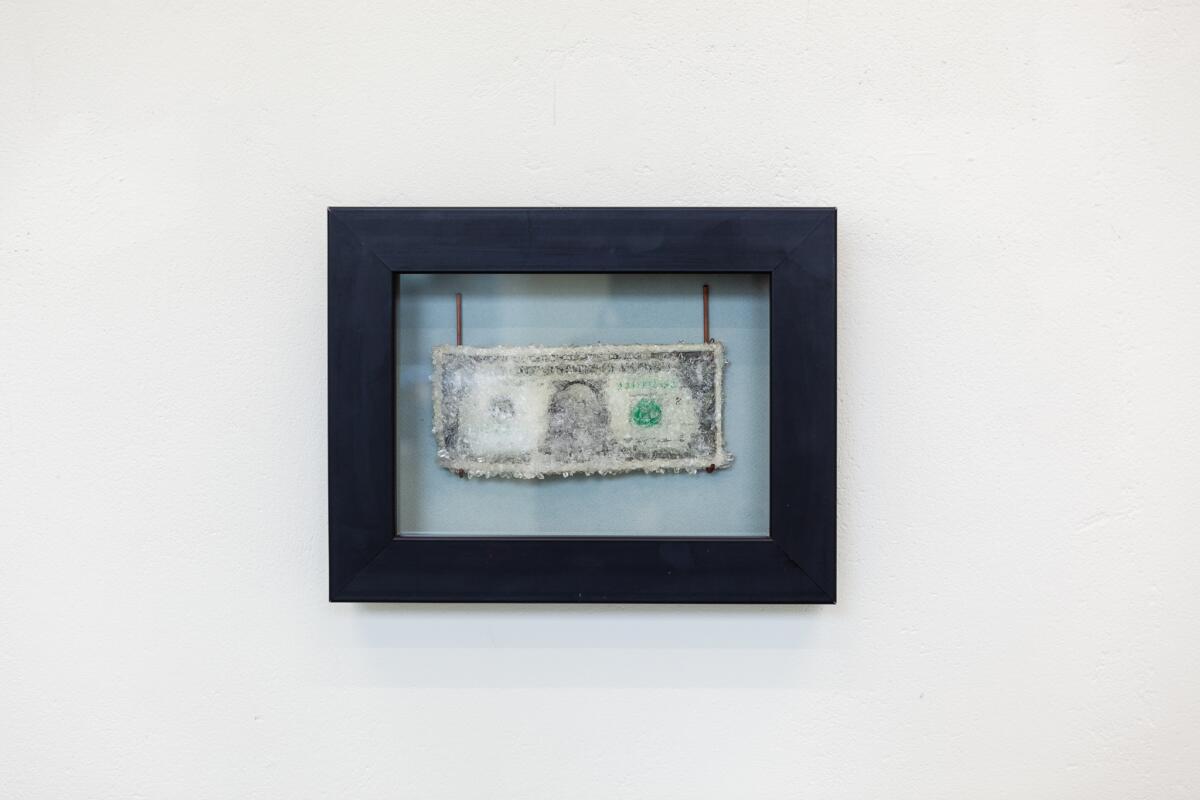
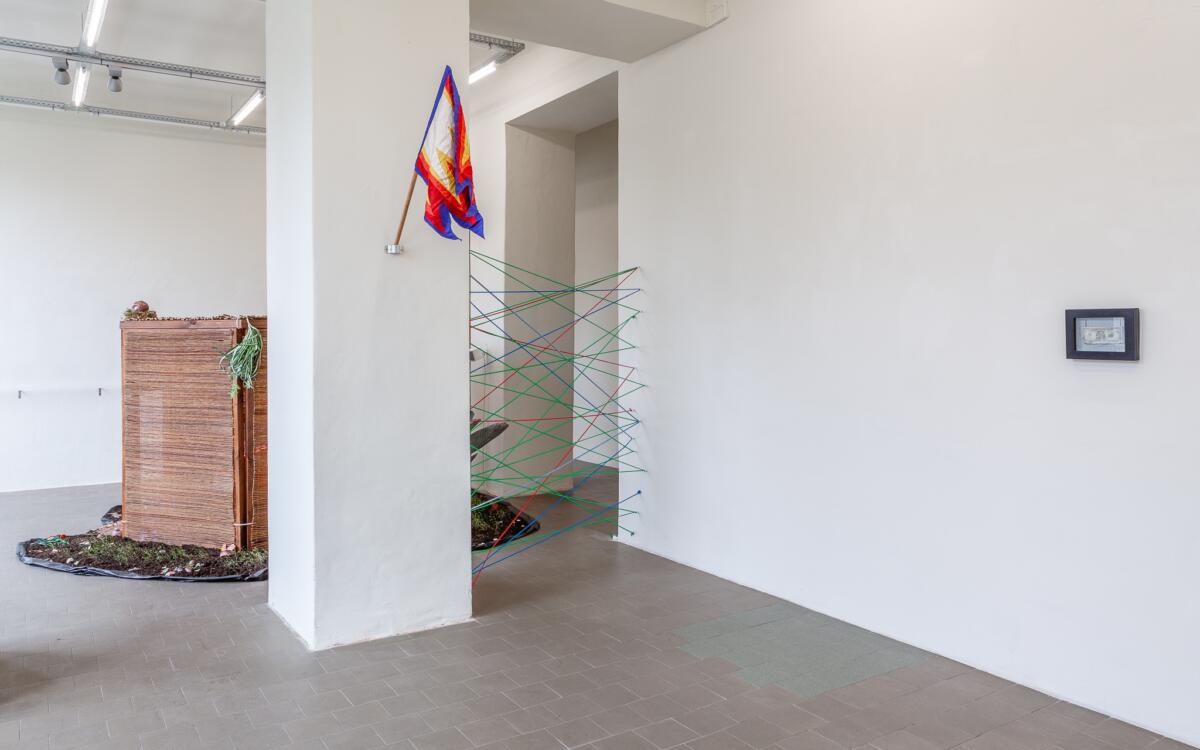
AS: Can you tell us a little bit about how you see the conjunction between your long-term project embedded in this installation and your research developed at the Mozarteum?
I understand art as an institution — socio-political, ontological, but also financial. I wonder about the individual agency of an artist in the context of such an institution or organization. I use artistic production to comprehend ethics nowadays in relation to capital, and I understand the political nature of art in terms of morality. Art production processes are often not mentioned because they are uncomfortable to discuss openly, also for the artists themselves. When you create something artistic, whether you want it or not, you enter into these dependencies. I get the feeling a lot of people think that once you’re inside you can’t criticize it anymore. But why not criticize it, knowing that you are getting into these dependencies? I’m not going to moralize anyone, I’m rather wondering where the different boundaries are and what really results from my actions. It seems to me that art as an institution is a fascinating category to consider ethics, because here everything is inscribed somewhere at the level of who gets paid, what art is used for at the state, political or market level. Many questions arise here, including who really does the work, who outsources the work, and who takes profit from it? In a secular context, because it seems quite important, art provides such opportunities to reflect on what morality is in isolation from monotheistic religions. I am not able to create a new code of ethics on my own, so I only wonder and examine how much an individual can do.
RD: You don’t seem interested in earning capital from your projects, but you’re not a painter either, or certainly not exclusively.
My sketchbooks are mostly notebooks. Sometimes I draw something, predominantly some scenes made quickly. These paintings are usually a collage of sketches that are created at different times, in different notebooks, which I simply combine into loose compositions. Most often I paint in small formats, which is probably also related to the ergonomics of painting in my case. I’ve never been able to transport all these large objects. I have several large paintings that I painted at the beginning of my studies. Since then, I’ve moved a number of times. They went into my parents’ attic, where they laid for many years before finally being destroyed. At some point, I started painting on paper. I use a small brush and I paint in a rather detailed way. I listen to different podcasts and audiobooks or lectures at the same time. This is an activity that helps me somehow to cut off and focus while doing the other thing, especially since it’s quite a repetitive gesture.
Commodifying art (in the context of the art market) is not ethical in itself. I think all art produced by public money — which in my case is semi-truth, I sponsor about 50% of my installations myself, from the money I make producing art and other cultural or research projects for others — shouldn’t be commodified. I’m not sure if I would manage to not sell my art forever. Perhaps one day I will have to choose between making art and having to sell it. But until it’s possible, I’m trying to find alternative ways of producing it than being represented by a gallery. Anywhere where the structures of capital become blurry, with art market they are extremely blurry — people try to avoid taxes, create speculative investment bubbles, etc., clear the image of business via doing “public good” and invest in art that is not public but forms a new value as a private collection — e.g. banks, or insurance companies etc. — one cannot talk about ethical actions. That’s why I’m trying to avoid it as long as I can.
Edited by Katie Zazenski

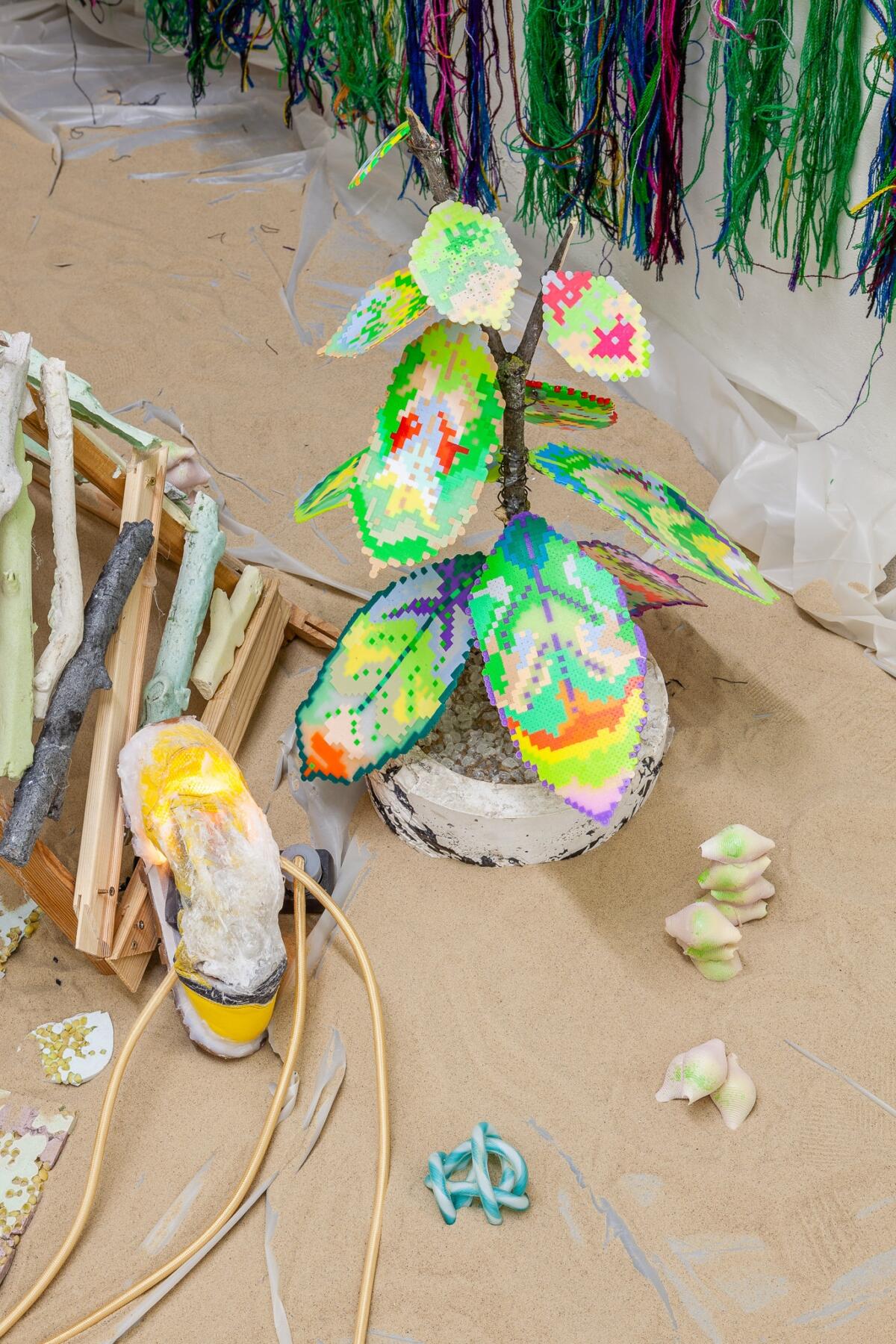

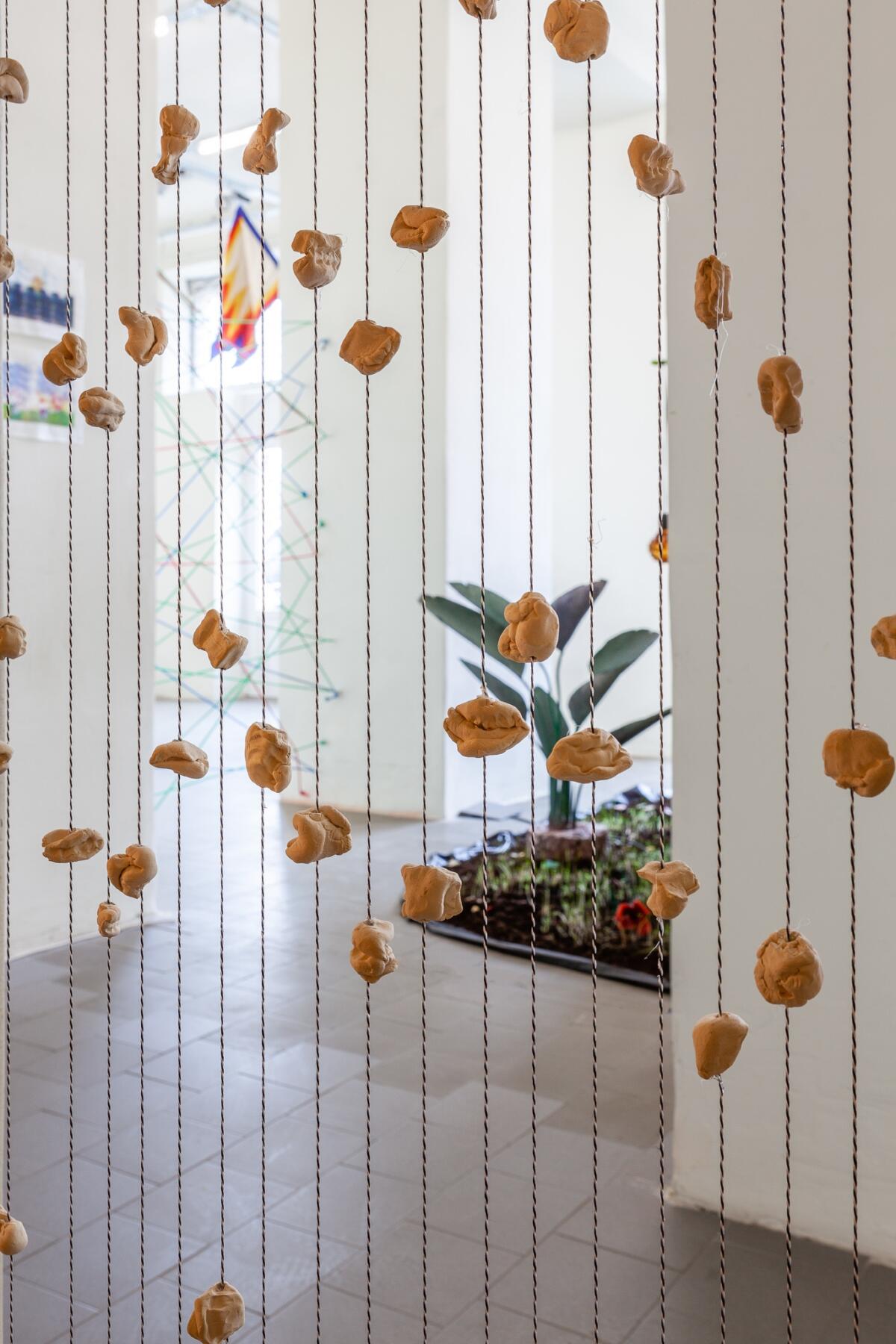
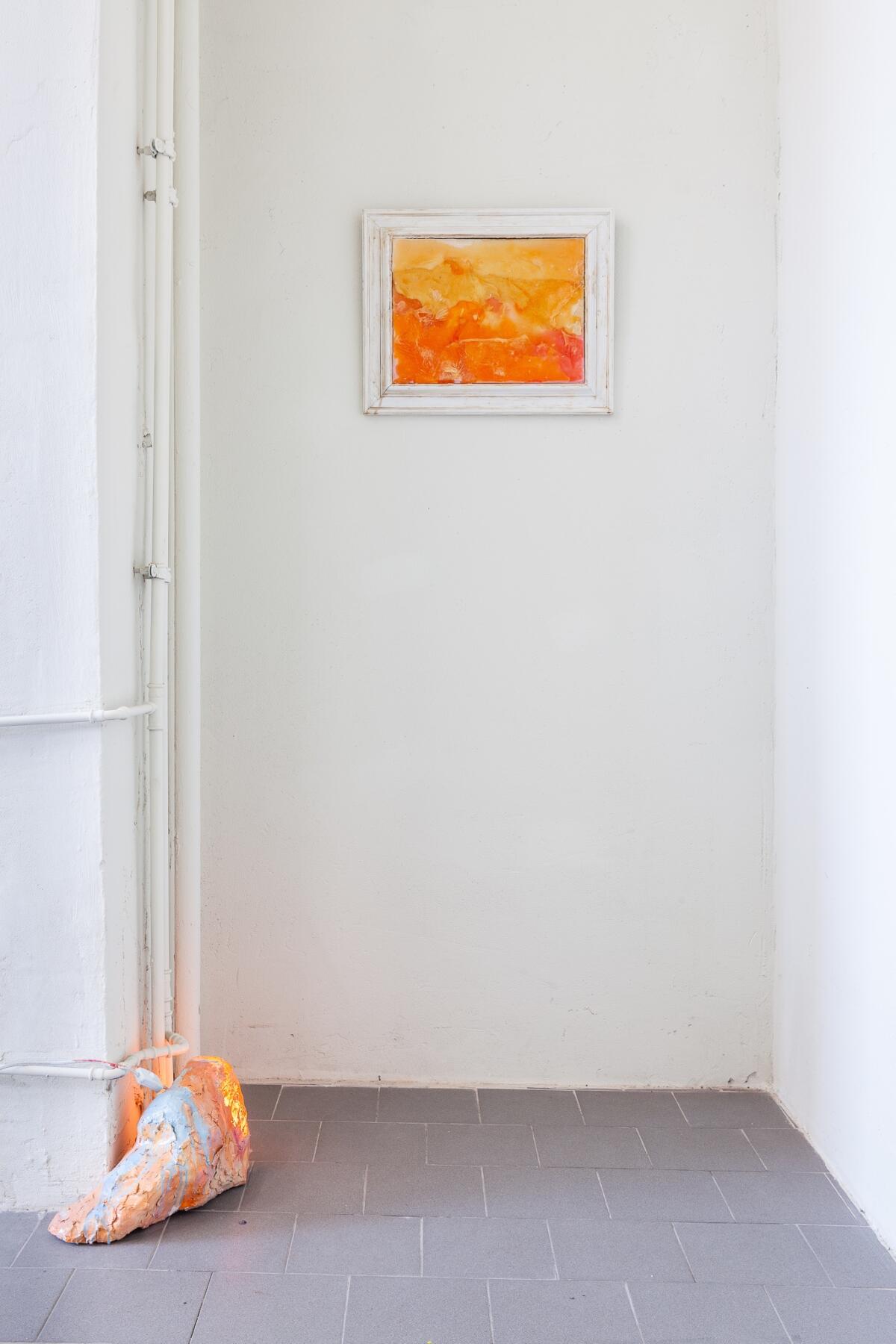

The exhibition was produced by the Katarzyna Kozyra Foundation as part of the project “Przeciw (stawanie)”. The first edition of the project was created in cooperation with the Dzielna Foundation.
Imprint
| Artist | Agata Cieślak |
| Exhibition | Zajmowała nas pielęgnacja szczątków / We were tending to the remains |
| Place / venue | Dzielna Foundation |
| Dates | 9.03.2023—7.05.2023 |
| Curated by | Anna Ciabach |
| Index | Agata Cieślak Romuald Demidenko |

